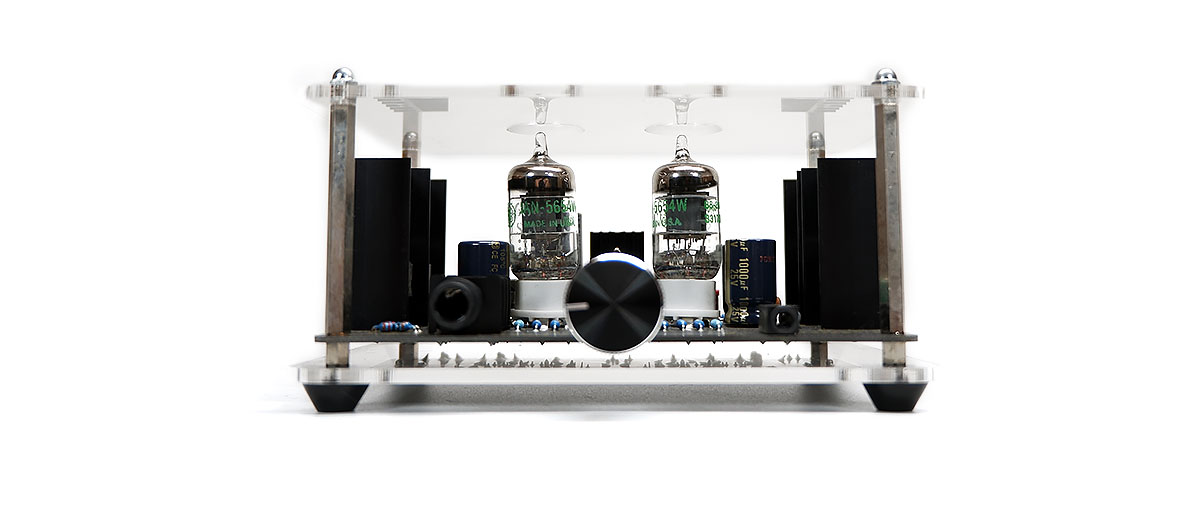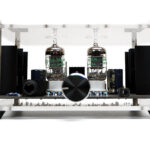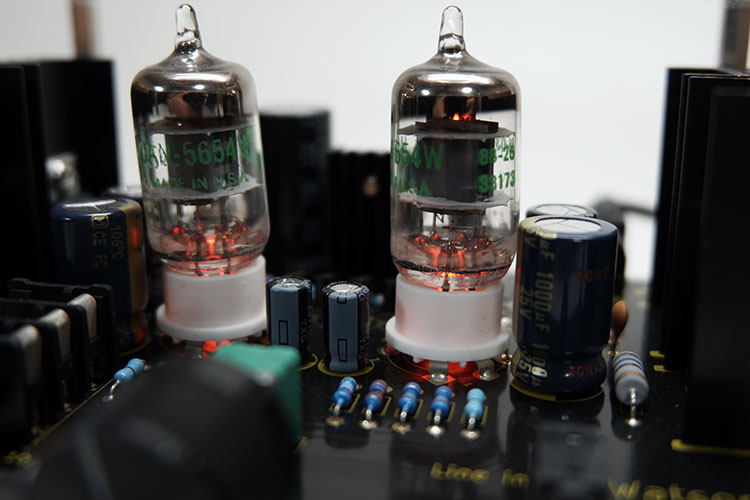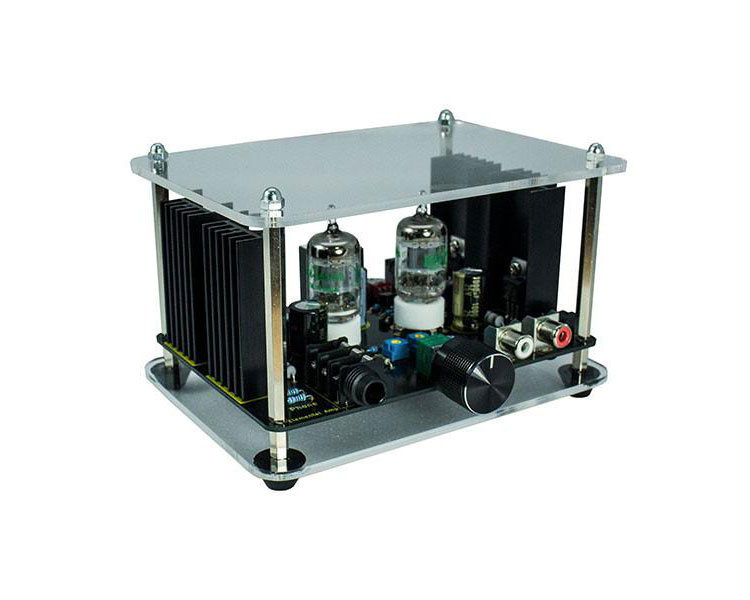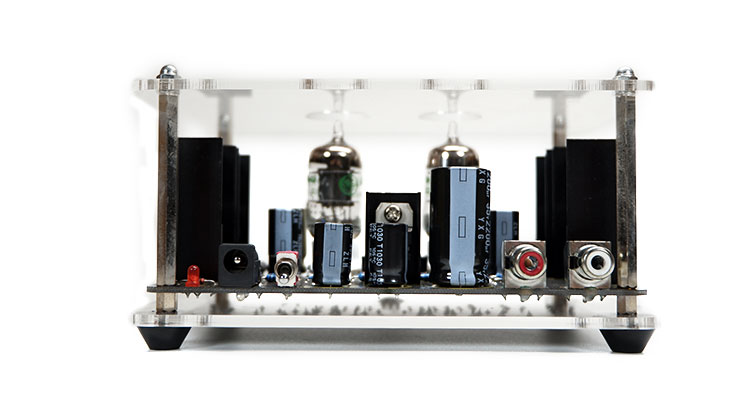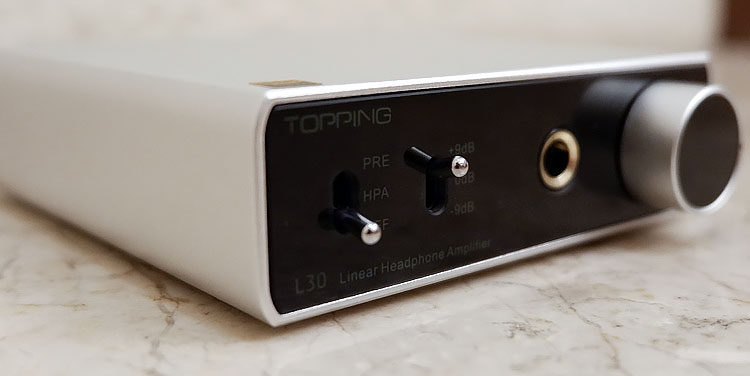The Elemental Watson II is an affordable single-ended Class-A tube hybrid headphone amplifier offering up to 2.0W RMS per channel. It is priced at $238.86.
Disclaimer: The Elemental Watson II sent to us is a direct purchase from their website. We thank the team at Jaben Singapore for shipping it safely and quickly.
To read more about headphone amplifiers we have featured on Headfonics click here.
Note, this review follows our new scoring guidelines for 2021 which you can read up on here.
Jaben is an audio dealership throughout South East Asia, but it is well-loved by headphone enthusiasts even beyond this region. They can ship their products to the whole of the Southeast Asian region at reasonable prices.
Jaben has been distributing various headphone brands including Sennheiser, Beyerdynamic, Final Audio, and more. Just recently, they have been working on their own line of products, and one of them is their custom-made Elemental Watson II headphone Amp.
Tech Highlights
The Elemental Watson II is a pure class-A hybrid tube amplifier. As a tube-hybrid amp, the Watson II can produce 2W per channel at 30Ω, and 250mW at 300Ω. This would be quite a lot of power and will ensure that Watson II can drive virtually and headphone in the market.
Aside from being able to produce a lot of power, Watson II also features a dual-mono design. Dual-mono designs are normally found in higher-end gear, but it was incorporated into the Watson II’s design to ensure that there is good channel separation and a good amount of current on tap when it is needed.
In its stock form, the Watson II also ships with a matched pair of GE Jan 5654W. These tubes are normally used as upgrade tubes on most entry-level tube-hybrid amplifiers, but they just decided to throw them in as stock tubes. This means that you’re good to go the moment you open the box.
Packaging & Accessories
When I ordered Watson II, I was expecting that the package would be simple, but they actually exceeded those expectations. The package is a simple cardboard box, where you can find the 28V, 0.8A DC adaptor and the amplifier itself, and some bubble wrap to protect the contents.
While the box was simple, it did its job of protecting the amplifier while it was being shipped over from Singapore.
Design
The theme of simplicity does not end with the packaging though, as the amplifier has stripped away most luxuries to lower the costs. Luxuries like having an enclosure have been removed in favor of two acrylic sheets to protect the underside of the PCB as well as the top to protect it from falling debris.
This might seem a bit scary for some, but the Watson II doesn’t pose any danger as long as it isn’t brought too close to something like water.
The rear of the amplifier is composed of a power indicator LED, a DC input, the power switch, and the RCA inputs. One of the more notable upgrades of the Watson II over the original Watson is that the RCA inputs have been relocated to the rear. At the front, there’s a ¼” headphone output, the volume knob, and a line input.
It would have been nice if the power switch was relocated to the front though, as reaching for it blindly on an open case might not be the most ideal situation. But in general, the Watson II remains safe despite the open case design, as most of the components are well soldered, and flush on the PCB.
I/O
As for I/O, the Watons II is as straightforward as they come. There’s a pair of RCA inputs at the back, and a headphone output in front, power it on, and turn up the volume, and that’s it.
Although there is a 3.5mm line input in the front, it is electrically connected to the RCA inputs in the rear, so we have to be careful not to use it at the same time. The line-in option in front is just there for convenience when you want to have an input signal through a 3.5mm jack in the front.
Aside from the added convenience of a 3.5mm line input, the Watson II is pretty much just an amplifier, with no gain switches, no displays, or even fancy balanced outputs. It’s just a simple single-ended amplifier with a volume knob that will just increase the volume as you crank it up.
Sound Impressions
The first thing that I was expecting from a tube headphone amplifier is that it will have a warmer tonality. However, this is not what the Watson II exhibited, in fact, it is generally quite neutral. None of the frequencies are emphasized too much, except maybe the midrange, but even then it was just by a smidge.
While the Watson II did not change the tonality too much, the biggest change that I heard with the Watson II is the way it made every headphone sound thicker. The plucked quality of planars is suddenly supplemented by a richer sound. While this would come at the cost of some detail retrieval, this is a welcome change when the headphone sounds a bit too thin.
In terms of speed, the Watson II is no slouch, but it’s generally a bit less immediate in terms of impact. This gives most tracks a richer quality, at the cost of some accuracy. When it comes to soundstage, the Watson II might sometimes feel like it’s a bit more intimate, but it still remains nicely balanced.
When it comes to the layering of the details, the Watson II can keep up with some solid-state amps. There is a good level of layering, but I would have wanted to hear a more accurate presentation of the layering within the soundstage. The Watson II is not particularly dynamic, as it tends to play loud most of the time, and softer sounds tend to sound louder than they should.
The general impression that I got with the Watson II is that it creates some welcome dynamic range to plenty of headphones I tested. It gives any headphones a bit more authority, creating a better sense of presence in an expansive soundscape.
Synergy
This amplifier can push out quite a lot of power, but without any gain settings, it might not be that easy to do fine adjustments with the amount of power that the Watson II produces. With my current lineup of dynamic driver and planar magnetic headphones, I have never gone beyond the 11 o’clock position without running the risk of damaging either my headphones or my hearing.
While the Watson II is more than capable of driving any of my headphones, there is some volume imbalance below the 8’o clock position on the potentiometer.
This results in little wiggle room for some of my easier to drive headphones like the Ananda and the LCD-X. This issue is further magnified when the Watson II is used to drive any IEM, as the volume will just be unbalanced and there will be a lot of crackle at the lowest volume settings.
In general, the Watson II can play well with any headphone, but it will have trouble driving anything that’s too efficient. It’s also worthy to note that when the Watson II is first powered up, it needs about 3 minutes to settle down before plugging in your headphone, otherwise there will sometimes be a loud pop before the sound would slowly fade in with a crackle.
Headphone Pairings
Sennheiser HD600
I’ve always heard that the HD600 pairs well with tubes, and this is one of the reasons why I ended up getting the Watson II. I expected more of a difference with the HD600, but I was still impressed at how well the HD600 played with the Watson II while it was plugged into my Chord 2qute.
With HD600 being known for its rich and euphonic midrange, I didn’t see any need for the Watson II to enhance this quality. When I listened to Wicked Game by Chris Isaac, the euphonic character of his vocals was still there, but not much more prominent through the Watson II than on other solid-state amps.
In terms of dynamics, the HD600 doesn’t need much help there either, but I’m glad that the Watson II didn’t detract that much from what’s already there. However, what’s improved by quite a bit is the sub-bass presence of the HD600. With Drink Up by Train, sub-bass notes are just a bit more prominent with the Watson II in the signal chain.
The width of the soundstage is not improved by the Watson II by much, but there is a perceptible improvement when it comes to the size of the image that is created. The Watson II made the HD600 sound larger than it normally does, but this sort of made the HD600 sound a bit more intimate.
While the HD600 wasn’t able to benefit from all the enhancements brought about by the Watson II, pairing the HD600 with the Watson II is still an engaging combination.
Hifiman Ananda
While I wasn’t expecting that the Watson II would play well with the Ananda, I was pleasantly surprised at how the combination of the Watson II and my Chord 2qute made the Ananda sound better than I’ve ever heard it before. The relationship between the Watson II and the Ananda is simply synergistic.
Bass
With the Ananda’s planar magnetic driver having a typically plucked planar quality to it, the Watson II was able to complement this by thickening the sound quite a bit. This gave the Ananda an overall weightier and thicker sound, especially in the bass and midrange.
While the bass is not a particular weakness of the Ananda, I always find it lacking in terms of bass impact, since the Ananda’s large drivers couldn’t slam that hard. However, the Watson II can create a larger image, which in turn slightly compensates for the Ananda’s driver size, and increases the sense of the impact that is created by the Ananda.
When I listened to Cello Suite No. 1 in G Major rendered by Yoyo Ma, I was impressed at how realistic the sound ended up being. With this combination, there was a very tangible center image that felt like it was coming out of speakers.
The combination of the openness of the Ananda and the airy presentation of the Watson II gave me this surreal feeling that something was playing right in front of me, instead of something being blasted in my ears.
Mids & Imaging
The midrange on the other hand is not typically the star of the show when it comes to the Ananda, but when the Ananda is played through the Watson II, it’s a different story. Listening to Wicked Game by Chris Isaac, the Ananda’s midrange can fully display the ethereal vocal quality of the track.
The Ananda is generally a wider headphone, but the Watson II will make it slightly more intimate. This is not a huge loss though, since the Ananda has some soundstage to spare. While the soundstage might be slightly narrower, it doesn’t end up feeling boxed in, as it feels open and expansive.
In the song Bright by Echosmith, the room can easily be visualized when the playback system is up for the challenge. And the combination of the Ananda and the Watson II is up for it, as it gave me a good idea of the size of the room where the song was recorded.
Synergy happens when the combination of the two elements becomes greater than the sum of its parts, and this is what happened when I put the Ananda and the Watson II together. Each part was able to compensate for the weaknesses of the other, which brought forth an overall more enjoyable system.
Select Comparisons
Topping L30
Technical
While the L30 is generally cheaper than the Watson II, but the Elemental unit does go on sale from time to time so the price gap can be lower.
Both the L30 and the Watson II are pure single-ended amplifiers, the L30 comes with a few more bells and whistles. With the addition of a 3-step gain switch, a preamp out, and an aluminum case, the L30 is simply the more versatile device of the 2.
Of course, the L30 is a solid-state op-amp-based amplifier, so maybe the Watson II can compensate for the loss of versatility with its tube sound and pure class-A amplifier topology?
Performance
The first thing that I noticed when I went from the L30 to the Watson II is that the Watson II is the thicker of the two amplifiers. In terms of the bass, the Watson II just felt like it had more of a sub-bass extension and a thicker upper bass region. It wasn’t necessarily louder, but it just had a more concrete presence in the bass region.
Moving up to the treble, the L30 seems to edge out the Watson II, since the L30 ended up being the brighter of the two amplifiers. This made cymbal hits a bit more noticeable with the L30.
When it comes to soundstage, the Watson II feels a bit narrower, while remaining the more expansive of the two. Instruments, particularly the distinct timbral quality of cymbals are just presented more vividly through the Watson II, while the L30 will slightly blur them together.
In terms of sound quality, the Watson II has some clear advantages over the L30, only lagging behind in terms of treble quantity. However, the Watson II does have quite a few weaknesses in terms of added features, and of course, the lack of a decent case might be a deal-breaker for some.
Our Verdict
The Elemental Watson II is a simple product, where the designers removed everything that can possibly be removed from a desktop amplifier. There are no gain switches, no pre-amp outs, and not even a decent aluminum case. It couldn’t even play too well with some extremely efficient headphones and most IEMs.
Despite having quite a few drawbacks, this was designed to power headphones. And it excels at what it was designed to do, and it creates an engaging musical experience with its pure class-A topology, and tube output stage.
Elemental Watson II Specifications
- Frequency Response: 10Hz to 100kHz(-3dB)
- Output Power (≤30Ω, Single-Ended): 2,000 mW
- Output Voltage (≤600Ω, Single-Ended): 250 mW
- Input Voltage (Pro iCAN): DC 26V/0.8A
- Power Consumption: ≤ 22W idle, 50W max.
- Dimensions: 140 (l) x 90 (w) x 130 (h) mm
- Weight: 320 grams

